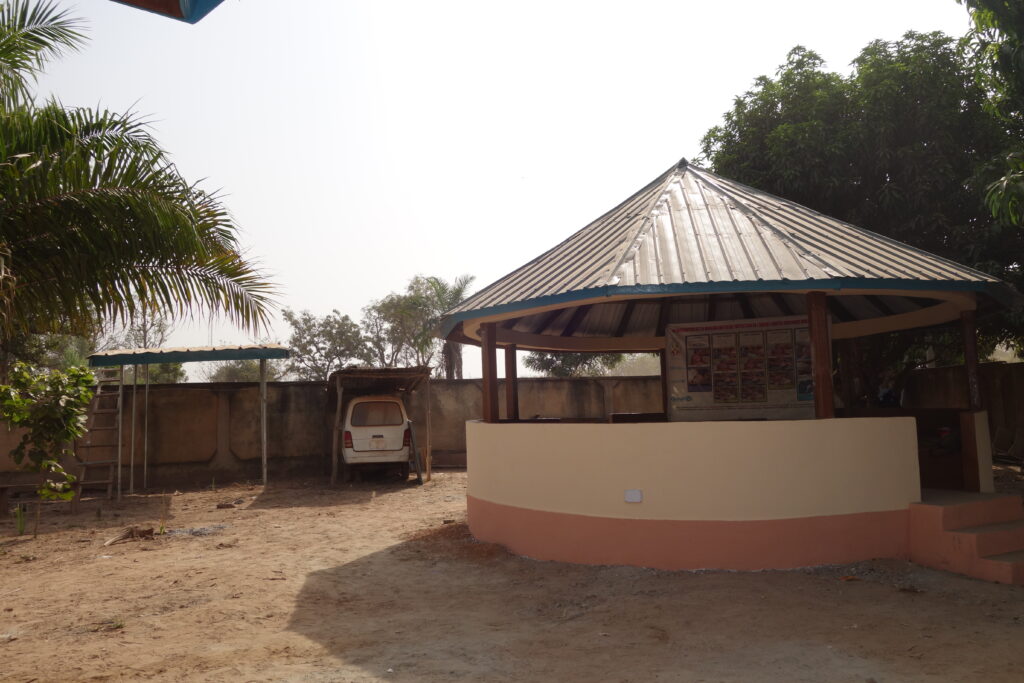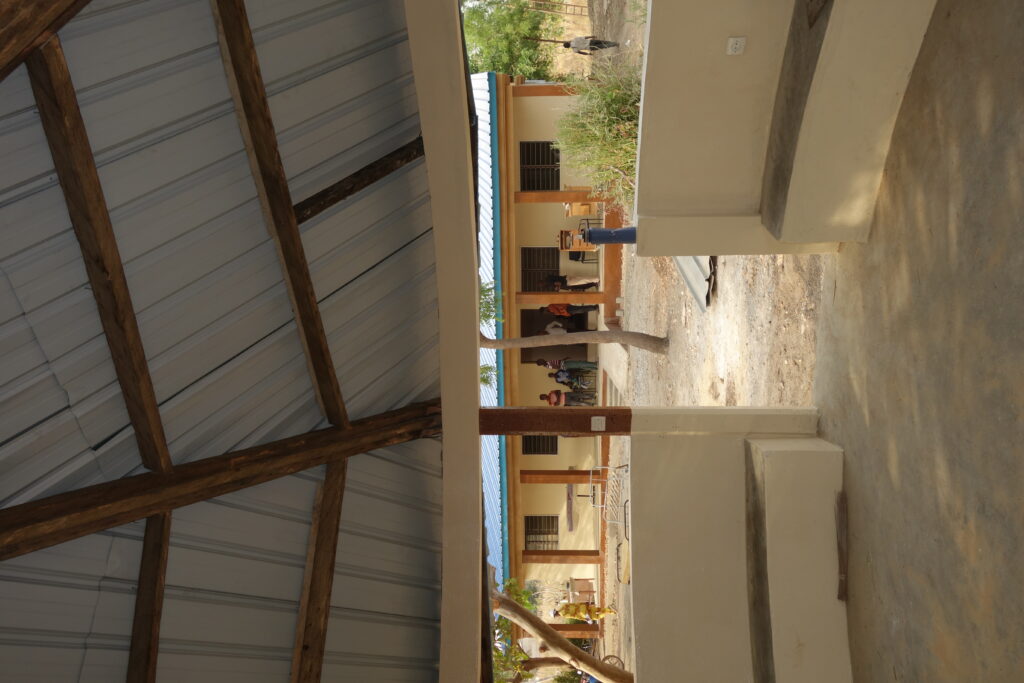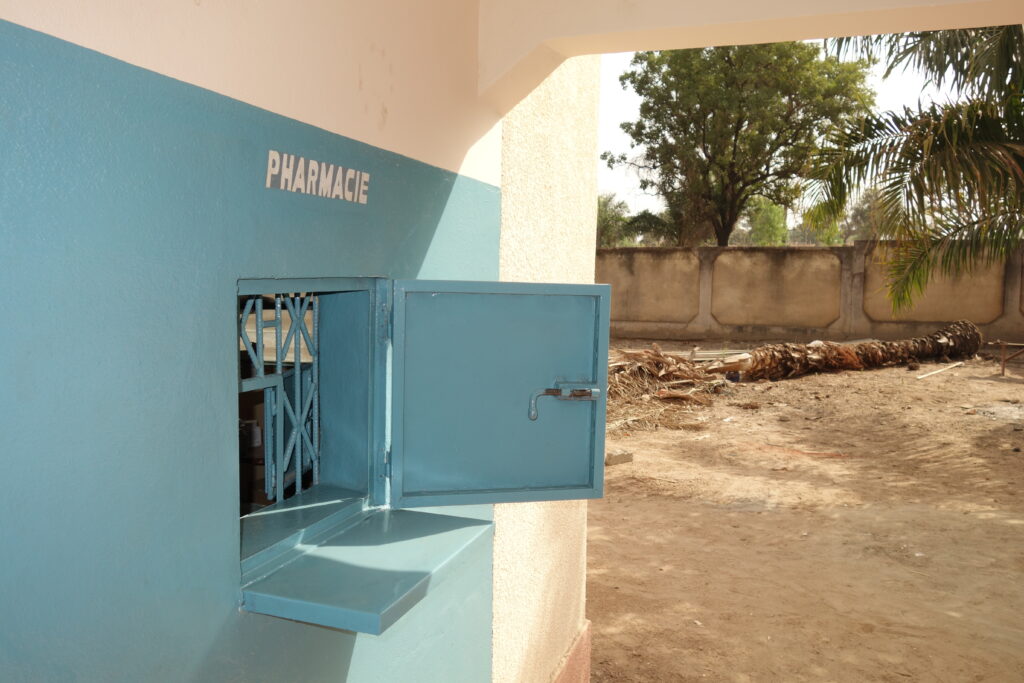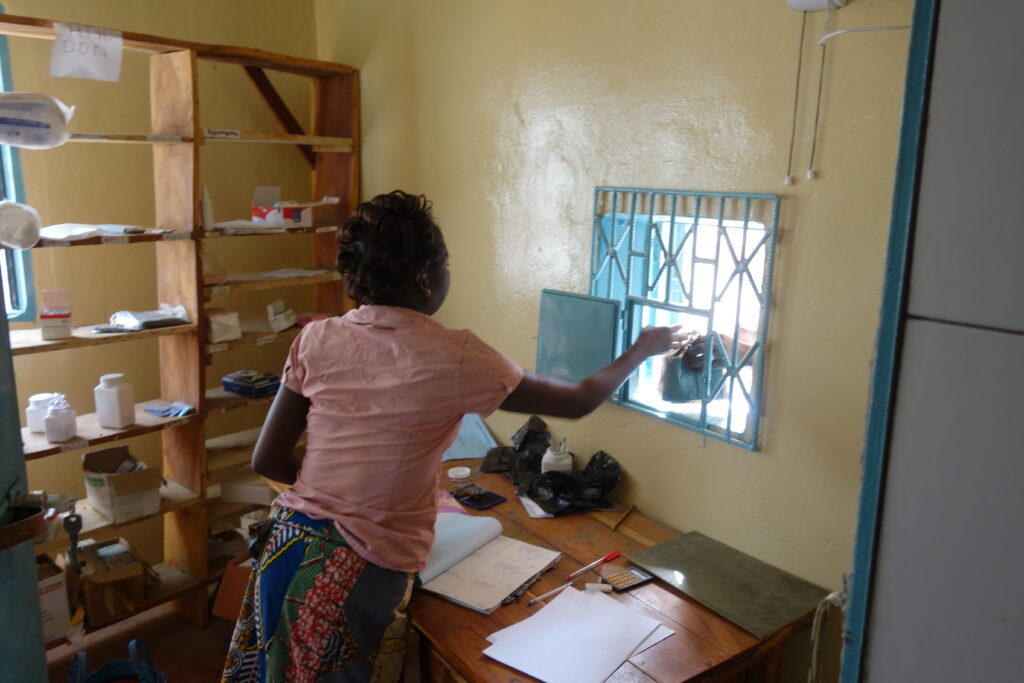“When a person from this village travels to the Health Center” the Chief of Village of Djamde explains, “they have to cross long distances under the hot sun. When they arrive, hot, tired, and ill, they step into the center and the first thing they feel is cool air from the newly installed ceiling fans. Before they receive any medical care, already they begin to feel better.” For the chief, infrastructure improvements are about treating patients with the dignity they deserve and having quality buildings to reflect the quality of care provided within their walls.
However, this hasn’t always been the case.
Before the renovation, the Djamde Health Center lacked basic infrastructure including water, electricity, and rooms for privacy. Health center personnel were unable to keep vaccinations cold and safe, and the center lacked fans to cool patients down amidst the grueling heat. Furthermore, medication stock-outs, due to a lack of planning tools, left health center staff unable to effectively deliver healthcare. Patients felt uncomfortable in the space where they needed to feel the most comfortable. This was not only challenging for patients; it was challenging for the health center staff that have spent their lives trying to improve the health of their communities.
Integrate Health’s mission is to make quality primary healthcare accessible to everyone, and quality primary healthcare requires that health center staff have the tools they need to provide care to patients in a physical environment that is comfortable and suits their needs.
How does Integrate Health support health infrastructure?
Health infrastructure refers to the physical environment where health is delivered, this includes the health center buildings and the accompanying utilities including electricity, water, equipment, etc. After evaluating each health center, Integrate Health works with a range of partners to transform public health clinics into buildings that match the quality of healthcare received inside. Examples of infrastructure improvement projects include the construction of a water tower and installation of plumbing systems; installation of solar power; construction or expansion of maternity wards; and renovation of latrines, roofs, walls, doors, windows, and electrical wiring
How does Integrate Health support supply chain management?
Not only is it important that patients are able to access care in comfortable and hygienic spaces that are well-equipped, but they must also trust that the health center can deliver the care that they need, which includes medicines. Through a two-pronged approach, Integrate Health supports the public supply chain by reinforcing the Ministry of Health’s preexisting channels and by encouraging public sector clinics to recruit a member of the community to serve as a full-time Pharmacy Manager. Pharmacy Managers must hold a university degree and receive training in supply chain management. They work closely with Clinical Mentors and health center staff to optimize health center functioning. Strengthening the public supply chain serves to reinforce both clinics- and community-based services as CHWs procure their supplies directly from the clinic through an integrated supply chain.
How does Integrate Health partner with organizations for renovation projects?
For renovation projects, Integrate Health and works closely with Construction for Change, an organization with the mission to build spaces where people can become healthier, better educated, and increase economic mobility. Through this partnership, and alongside the 30/30 project and the Ministry of Health, we have renovated 8 clinics, providing care to over 140,000 Togolese.
How do Infrastructure and Supply Chain improvements impact the quality of care delivered?
Quality primary healthcare includes safe, well-equipped health centers. After renovations, nurses and midwives have the tools they need to provide high-quality healthcare, including electricity to keep vaccinations cool, tiled walls that can be easily cleaned to reduce the spread of infections, ceiling fans to keep air circulating, and clean running water, that comes out of a faucet into a sink where a midwife can wash her hands with soap before delivering a baby.
Through infrastructure and supply chain improvements, integrated with a cadre of professionalized Community Health Workers, clinical capacity building, and user fee removal for pregnant women and children, patients have greater access to the care they need. And as they leave the cool air in the clinic to the sun-soaked road towards their homes, patients know that a health center, built for them, is waiting when they may need it again.





